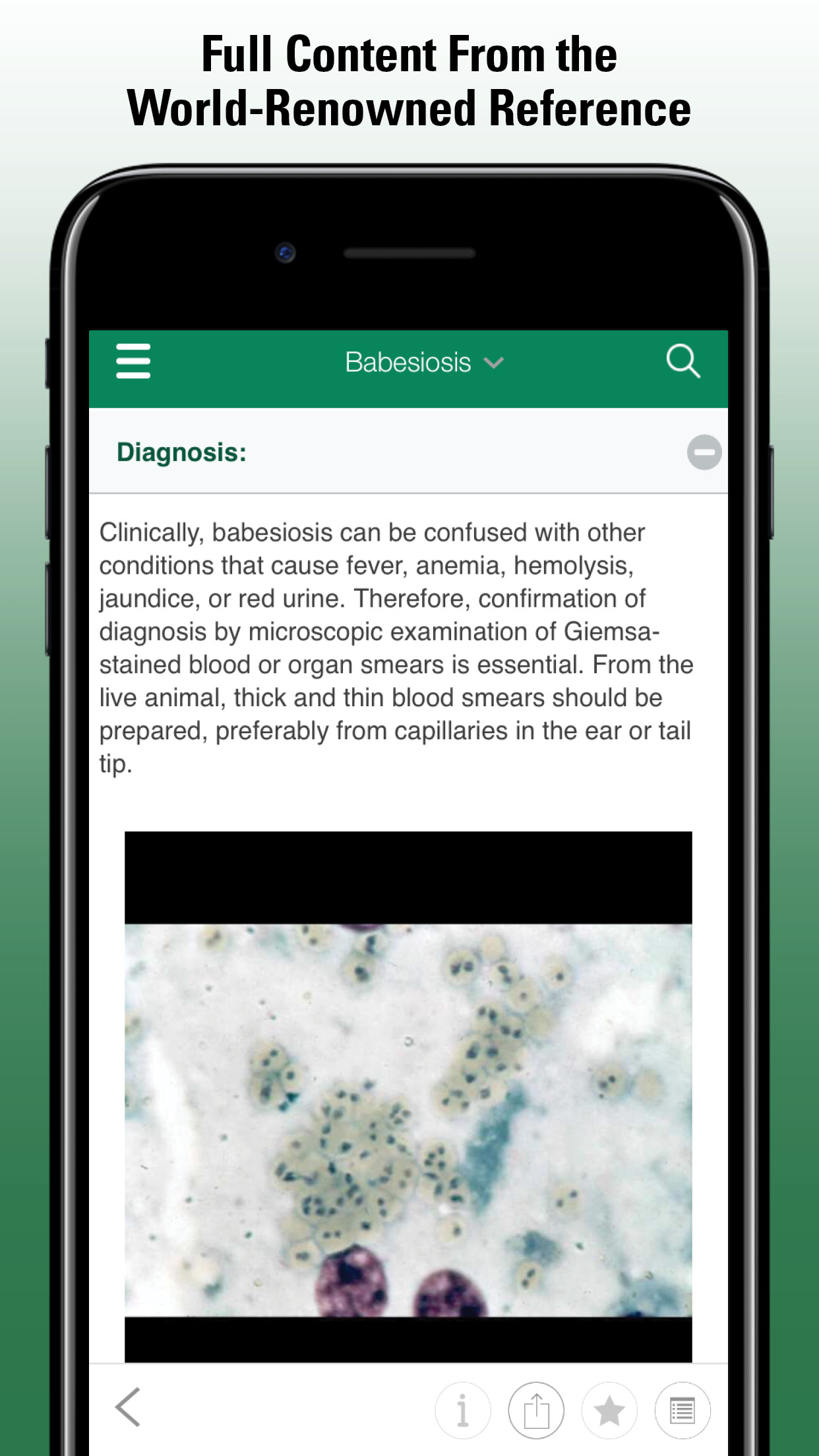Osteochondrosis in Horses
(Osteochondritis dissecans, Dyschondroplasia)
- Lameness in Horses
- Overview of Lameness in Horses
- The Lameness Examination in Horses
- Imaging Techniques in Equine Lameness
- Arthroscopy in Equine Lameness
- Regional Anesthesia in Equine Lameness
- Disorders of the Foot in Horses
- Osseous Cyst-like Lesions in the Distal Phalanx in Horses
- Bruised Sole and Corns in Horses
- Canker in Horses
- Fracture of Navicular Bone in Horses
- Fracture of Distal Phalanx in Horses
- Keratoma in Horses
- Laminitis in Horses
- Navicular Disease in Horses
- Pedal Osteitis in Horses
- Puncture Wounds of the Foot in Horses
- Pyramidal Disease in Horses
- Quittor in Horses
- Quarter Crack in Horses
- Scratches in Horses
- White Line Disease in Horses
- Sheared Heels in Horses
- Sidebone in Horses
- Thrush in Horses
- Disorders of the Pastern and Fetlock
- Fractures of the First and Second Phalanx in Horses
- Fractures of the Proximal Sesamoid Bones in Horses
- Osteoarthritis of the Proximal Interphalangeal Joint in Horses
- Palmar/Plantar Metacarpal/Metatarsal Nonadaptive Bone Remodeling in Horses
- Sesamoiditis in Horses
- Chronic Proliferative Synovitis in Horses
- Digital Sheath Tenosynovitis in Horses
- Disorders of the Metacarpus in Horses
- Tendinitis in Horses
- Suspensory Desmitis in Horses
- Inferior Check Desmitis in Horses
- Bucked Shins in Horses
- Exostoses of the Second and Fourth Metacarpal Bones in Horses
- Fractures of the Small Metacarpal (Splint) Bones in Horses
- Fracture of the Third Metacarpal (Cannon) Bone in Horses
- Disorders of the Carpus in Horses
- Fracture of the Carpal Bones in Horses
- Subchondral Bone Disease of the Third Carpal Bone in Horses
- Tearing of the Medial Palmar Intercarpal Ligament in Horses
- Osteoarthritis of the Carpus in Horses
- Distal Radial Exostosis and Osteochondroma of the Distal Radius in Horses
- Carpal Hygroma in Horses
- Rupture of the Common Digital Extensor Tendon in Horses
- Disorders of the Shoulder in Horses
- Developmental Diseases of the Shoulder in Horses
- Fractures of the Shoulder in Horses
- Bicipital Bursitis in Horses
- Infection of the Shoulder in Horses
- Suprascapular Neuropathy in Horses
- Osteoarthritis of the Shoulder in Horses
- Disorders of the Elbow in Horses
- Developmental Orthopedic Disease in the Elbow of Horses
- Fractures of the Elbow in Horses
- Osteoarthritis of the Elbow in Horses
- Collateral Ligament Injury in the Elbow of Horses
- Disorders of the Metatarsus in Horses
- Bucked Shins/Dorsal Cortical Fractures of the Third Metatarsal Bone in Horses
- Exostoses of the Metatarsal Bones in Horses
- Diaphyseal Fracture of the Third Metatarsal Bone in Horses
- Incomplete Longitudinal Fractures of the Plantar Aspect of the Third Metatarsal Bone in Horses
- Focal Bone Reaction and Avulsion Fractures of the Third Metatarsal Bone in Horses
- Fractures of the Second and Fourth Metatarsal Bones in Horses
- Enostosis-like Lesions of the Third Metatarsal Bone in Horses
- Disorders of the Tarsus in Horses
- Failure of Ossification of the Distal Tarsal Bones in Horses
- Osteoarthritis of the Distal Tarsal Joints in Horses
- Osteoarthritis of the Talocalcaneal Joint in Horses
- Osteoarthritis of the Tarsocrural Joint in Horses
- Synovitis/Capsulitis of the Tarsocrural Joint in Horses
- Osteochondrosis of the Tarsocrural Joint in Horses
- Osteitis of the Calcaneus in Horses
- Fractures of the Distal Tarsal Bones in Horses
- Fracture of the Talus in Horses
- Fracture of the Fibular Tarsal Bone (Calcaneus) in Horses
- Fracture of the Lateral Malleolus of the Tibia in Horses
- Tarsal Joint Luxation in Horses
- Desmitis of the Collateral Ligaments of the Tarsus in Horses
- Rupture of the Fibularis (Peroneus) Tertius in Horses
- Stringhalt
- Curb in Horses
- Disorders of the Tarsal Sheath in Horses
- False Thoroughpin in Horses
- Luxation of the Superficial Digital Flexor Tendon from the Tuber Calcanei in Horses
- Gastrocnemius Tendinitis in Horses
- Calcaneal Bursitis in Horses
- Capped Hock
- Disorders of the Stifle in Horses
- Osteochondrosis of the Stifle in Horses
- Subchondral Cystic Lesions in Horses
- Meniscus and Meniscal Ligament Injuries in Horses
- Cranial and Caudal Cruciate Ligament Injuries in Horses
- Collateral Ligament Injuries in Horses
- Intermittent Upward Fixation of the Patella and Delayed Patella Release in Horses
- Fragmentation of the Patella in Horses
- Patellar Luxation in Horses
- Patellar Ligament Injuries in Horses
- Gonitis and Osteoarthritis in Horses
- Chondromalacia of the Femoral Condyles in Horses
- Fractures of the Stifle in Horses
- Disorders of the Hip in Horses
- Luxation of the Coxofemoral Joint in Horses
- Pelvic Fracture in Horses
- Osteoarthritis and other Coxofemoral Joint Diseases in Horses
- Disorders of the Back and Pelvis in Horses
- Spinal Processes and Associated Ligaments in Horses
- Articular Process−Synovial Intervertebral Articulation Complexes in Horses
- Vertebral Bodies and Discs in Horses
- Muscle Strain and Soreness in Horses
- Lumbosacral Junction Abnormalities in Horses
- Sacroiliac Joint Abnormalities in Horses
- Developmental Orthopedic Disease in Horses
- Osteochondrosis in Horses
- Physitis in Horses
- Flexural Deformities in Horses
Osteochondrosis is one of the most important and prevalent developmental orthopedic diseases of horses. Although its specific etiology is not known, it is considered to arise from a focal disturbance in endochondral ossification, with subsequent trauma or physiologic loading resulting in lesion formation. The term osteochondrosis is currently used to describe the clinical manifestation of the disorder; however, the term dyschondroplasia is preferred when referring to early lesions.
Osteochondrosis has a multifactorial etiology that includes rapid growth, high carbohydrate diet, mineral imbalance, and biomechanics (ie, trauma to cartilage). Genetics has been implicated, with some breeds predisposed (eg, Standardbred and Swedish Warmblood). The condition mainly affects articular growth cartilage, but the metaphysis may also be involved. If the physeal metaphyseal cartilage is affected, bone contours and longitudinal growth are disturbed (see Physitis in Horses). Dyschondroplasia at articular surfaces may progress to formation of cartilage flaps or osteochondral fragments (osteochondrosis). At some sites, subchondral cysts may develop (see Subchondral Cystic Lesions). Axial skeletal involvement includes vertebral articular facets, which may be associated with stenosis of the vertebral canal and, therefore, ataxia and proprioceptive deficits (ie, wobbler syndrome), but the relationship between these conditions is not clear.
Clinical Findings:
The clinical signs of equine osteochondrosis are difficult to characterize specifically because of the wide range of lesions and sites involved. In young horses, many cases have no detectable clinical signs and are identified only on presale radiographs. Furthermore, lesions of dyschondroplasia may not progress to osteochondrosis, and radiographically observed osteochondrosis lesions may resolve over time without producing clinical signs. In severe cases, other signs of developmental orthopedic disease also may be apparent.
The most common presenting sign of osteochondrosis is a nonpainful distention of an affected joint (eg, gonitis, bog spavin). The exceptions to this are joints in which swelling is difficult to detect (eg, shoulder joint, medial femorotibial joint), in which case lameness is more often the first sign observed. Clinical signs may be divided broadly into two categories: those seen in foals <6 mo old and those seen in older animals. Often the first sign noted in foals is a tendency to spend more time lying down. This is accompanied frequently by joint swelling, stiffness, and difficulty keeping up with other animals in the paddock. An accompanying sign may be the development of upright conformation of the limbs. Fetlock osteochondrosis is particularly seen in younger foals (<6 mo old).
Lameness is usually absent or mild except for those sites mentioned above for which the earlier sign of joint swelling is difficult to detect. For example, lesions in the shoulder frequently result in moderate to severe lameness, muscle atrophy, and pain on joint flexion. In the stifle, some horses with subchondral bone cysts in the medial femoral condyle present with lameness severe enough that a fracture may be suspected, and swelling may only be detected on careful examination. More severe signs are also observed when osteochondral fragments come loose within the joint. This is often seen in yearlings or older horses that present with stiffness, flexion responses, and varying degrees of lameness. These signs are usually associated with the onset of training.
Diagnosis:
Clinical diagnosis can often be made on the basis of signalment and signs. More definitive diagnosis requires use of some specific clinical aids. Radiographic examination has been the traditional way to confirm diagnosis; however, early lesions involving cartilage without significant subchondral bone damage may not be visualized. In the distal limb, oblique views may be helpful; in the hock, because the most common site of a lesion is the distal intermediate ridge of the tibia, the best view is a plantarolateral/dorsomedial oblique. Ultrasonographic examination of the swollen joints can help delineate articular damage and synovial inflammation and determine whether osteochondral fragments are intra- or extra-articular. The most accurate way to confirm diagnosis is by arthroscopy, and most of the predilection sites are accessible.
Scintigraphy has limitations in growing horses because of normal high activity in physes and sites of active endochondral ossification. It is a useful technique to detect subchondral cysts and secondary degenerative changes in older horses. MRI is ideal for diagnosis of both early and late lesions but is usually not necessary. Also, sites that are most diagnostically challenging are generally in the proximal limb, where access is difficult. Clinical pathology and the evaluation of synovial fluid is rarely helpful but can be used to eliminate inflammatory causes of swollen joints.
Treatment and Management:
Management of osteochondrosis depends on the site and severity of signs. Mild cases recover spontaneously, and a conservative approach may be appropriate. In young animals (<12 mo old), this involves restricted exercise for some weeks combined with reduced feed intake to slow the growth rate. Particular care should be taken to ensure appropriate mineral supplementation (eg, in cases of suspected copper deficiency). It is controversial whether correcting the diet, once signs have developed, will actually assist resolution, but it may help limit or prevent further cases on stud farms. Intra-articular medication with hyaluronic acid may be beneficial, but injection of long-acting corticosteroids is not recommended in young, growing horses.
Cases considered for surgery are treated arthroscopically. This technique has been successful in most affected sites, particularly the hock, stifle, and fetlock. Damaged cartilage, osteochondral fragments, and compromised subchondral bone are removed and the joint flushed extensively with sterile fluid. Prognosis after removal of discrete osteochondral fragments is good. In cases with more extensive osteochondral damage, prognosis depends on the extent of the joint surface that must be removed. Prognosis is poor for cases with instability resulting from joint surface loss or in which secondary osteoarthritis (degenerative joint disease) is advanced. This is often the case with shoulder osteochondrosis because of the difficulty in detecting early signs. Cases involving subchondral cysts have a guarded prognosis, because these cysts are often in important weightbearing areas of the joint, and restoration of the joint surface is rarely possible.
Resources In This Article
- Lameness in Horses
- Overview of Lameness in Horses
- The Lameness Examination in Horses
- Imaging Techniques in Equine Lameness
- Arthroscopy in Equine Lameness
- Regional Anesthesia in Equine Lameness
- Disorders of the Foot in Horses
- Osseous Cyst-like Lesions in the Distal Phalanx in Horses
- Bruised Sole and Corns in Horses
- Canker in Horses
- Fracture of Navicular Bone in Horses
- Fracture of Distal Phalanx in Horses
- Keratoma in Horses
- Laminitis in Horses
- Navicular Disease in Horses
- Pedal Osteitis in Horses
- Puncture Wounds of the Foot in Horses
- Pyramidal Disease in Horses
- Quittor in Horses
- Quarter Crack in Horses
- Scratches in Horses
- White Line Disease in Horses
- Sheared Heels in Horses
- Sidebone in Horses
- Thrush in Horses
- Disorders of the Pastern and Fetlock
- Fractures of the First and Second Phalanx in Horses
- Fractures of the Proximal Sesamoid Bones in Horses
- Osteoarthritis of the Proximal Interphalangeal Joint in Horses
- Palmar/Plantar Metacarpal/Metatarsal Nonadaptive Bone Remodeling in Horses
- Sesamoiditis in Horses
- Chronic Proliferative Synovitis in Horses
- Digital Sheath Tenosynovitis in Horses
- Disorders of the Metacarpus in Horses
- Tendinitis in Horses
- Suspensory Desmitis in Horses
- Inferior Check Desmitis in Horses
- Bucked Shins in Horses
- Exostoses of the Second and Fourth Metacarpal Bones in Horses
- Fractures of the Small Metacarpal (Splint) Bones in Horses
- Fracture of the Third Metacarpal (Cannon) Bone in Horses
- Disorders of the Carpus in Horses
- Fracture of the Carpal Bones in Horses
- Subchondral Bone Disease of the Third Carpal Bone in Horses
- Tearing of the Medial Palmar Intercarpal Ligament in Horses
- Osteoarthritis of the Carpus in Horses
- Distal Radial Exostosis and Osteochondroma of the Distal Radius in Horses
- Carpal Hygroma in Horses
- Rupture of the Common Digital Extensor Tendon in Horses
- Disorders of the Shoulder in Horses
- Developmental Diseases of the Shoulder in Horses
- Fractures of the Shoulder in Horses
- Bicipital Bursitis in Horses
- Infection of the Shoulder in Horses
- Suprascapular Neuropathy in Horses
- Osteoarthritis of the Shoulder in Horses
- Disorders of the Elbow in Horses
- Developmental Orthopedic Disease in the Elbow of Horses
- Fractures of the Elbow in Horses
- Osteoarthritis of the Elbow in Horses
- Collateral Ligament Injury in the Elbow of Horses
- Disorders of the Metatarsus in Horses
- Bucked Shins/Dorsal Cortical Fractures of the Third Metatarsal Bone in Horses
- Exostoses of the Metatarsal Bones in Horses
- Diaphyseal Fracture of the Third Metatarsal Bone in Horses
- Incomplete Longitudinal Fractures of the Plantar Aspect of the Third Metatarsal Bone in Horses
- Focal Bone Reaction and Avulsion Fractures of the Third Metatarsal Bone in Horses
- Fractures of the Second and Fourth Metatarsal Bones in Horses
- Enostosis-like Lesions of the Third Metatarsal Bone in Horses
- Disorders of the Tarsus in Horses
- Failure of Ossification of the Distal Tarsal Bones in Horses
- Osteoarthritis of the Distal Tarsal Joints in Horses
- Osteoarthritis of the Talocalcaneal Joint in Horses
- Osteoarthritis of the Tarsocrural Joint in Horses
- Synovitis/Capsulitis of the Tarsocrural Joint in Horses
- Osteochondrosis of the Tarsocrural Joint in Horses
- Osteitis of the Calcaneus in Horses
- Fractures of the Distal Tarsal Bones in Horses
- Fracture of the Talus in Horses
- Fracture of the Fibular Tarsal Bone (Calcaneus) in Horses
- Fracture of the Lateral Malleolus of the Tibia in Horses
- Tarsal Joint Luxation in Horses
- Desmitis of the Collateral Ligaments of the Tarsus in Horses
- Rupture of the Fibularis (Peroneus) Tertius in Horses
- Stringhalt
- Curb in Horses
- Disorders of the Tarsal Sheath in Horses
- False Thoroughpin in Horses
- Luxation of the Superficial Digital Flexor Tendon from the Tuber Calcanei in Horses
- Gastrocnemius Tendinitis in Horses
- Calcaneal Bursitis in Horses
- Capped Hock
- Disorders of the Stifle in Horses
- Osteochondrosis of the Stifle in Horses
- Subchondral Cystic Lesions in Horses
- Meniscus and Meniscal Ligament Injuries in Horses
- Cranial and Caudal Cruciate Ligament Injuries in Horses
- Collateral Ligament Injuries in Horses
- Intermittent Upward Fixation of the Patella and Delayed Patella Release in Horses
- Fragmentation of the Patella in Horses
- Patellar Luxation in Horses
- Patellar Ligament Injuries in Horses
- Gonitis and Osteoarthritis in Horses
- Chondromalacia of the Femoral Condyles in Horses
- Fractures of the Stifle in Horses
- Disorders of the Hip in Horses
- Luxation of the Coxofemoral Joint in Horses
- Pelvic Fracture in Horses
- Osteoarthritis and other Coxofemoral Joint Diseases in Horses
- Disorders of the Back and Pelvis in Horses
- Spinal Processes and Associated Ligaments in Horses
- Articular Process−Synovial Intervertebral Articulation Complexes in Horses
- Vertebral Bodies and Discs in Horses
- Muscle Strain and Soreness in Horses
- Lumbosacral Junction Abnormalities in Horses
- Sacroiliac Joint Abnormalities in Horses
- Developmental Orthopedic Disease in Horses
- Osteochondrosis in Horses
- Physitis in Horses
- Flexural Deformities in Horses




